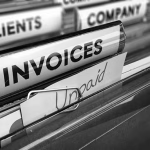As the cost of living continues to rise, many people across the UK find themselves unable to meet their financial obligations. Increasing energy bills, rent, and food prices have pushed households into debt, with some struggling to pay even their most basic bills. In these situations, individuals may feel overwhelmed by the mounting pressure from creditors, unsure of how to regain control of their finances. One solution available to individuals facing this challenge is an Individual Voluntary Arrangement (IVA), a formal agreement that offers an alternative to bankruptcy, allowing debtors to repay their debts in a manageable way.
An IVA provides debt relief by enabling individuals to agree on a repayment plan with their creditors. Managed by an insolvency practitioner, the IVA ensures that a portion of the debt is repaid over a fixed period, usually five to six years, after which any remaining unsecured debt is written off. This article explores how an IVA works, who qualifies, and the advantages and disadvantages of using an IVA as a debt solution.
What is an IVA?
An Individual Voluntary Arrangement is a formal insolvency procedure that allows individuals to repay their creditors over an agreed-upon time frame, typically based on their ability to pay. The primary purpose of an IVA is to offer a structured repayment solution for individuals who are facing significant financial distress but want to avoid the more severe consequences of bankruptcy.
An IVA is overseen by an insolvency practitioner (IP), who acts as an intermediary between the debtor and their creditors. The IP works to create a proposal outlining the debtor’s financial situation, including their income, expenses, and assets. The proposal also details how much the individual can afford to repay each month and over what period. The creditors then vote on whether to accept the IVA proposal. If 75% (by value of debt) of the creditors agree, the IVA becomes legally binding on all creditors, including those who did not vote or who voted against it.
Who Can Apply for an IVA?
Not everyone qualifies for an IVA. This debt solution is primarily for individuals who have significant debts but can still afford to make regular payments. Generally, an IVA is suitable for individuals who:
- Have unsecured debts exceeding £10,000
- Have multiple creditors
- Can afford to make regular monthly payments based on their income and essential expenses
- Have a stable income that ensures they can maintain the repayment schedule over the duration of the IVA
It is important to note that an IVA does not cover secured debts, such as mortgages or car loans, and individuals must still meet these obligations separately from their IVA payments.
How Does an IVA Work?
Once an individual has determined that an IVA may be a viable option, the process begins by consulting an insolvency practitioner. The practitioner will assess the debtor’s financial situation and draft a proposal that sets out how much the individual can afford to repay each month. The proposal will include detailed financial information, such as the debtor’s income, living expenses, and assets, to demonstrate their ability to meet the proposed payments.
The IP will then present the proposal to the individual’s creditors, who will vote on whether to accept it. If at least 75% of the creditors, by the total value of the debt, approve the IVA, it becomes legally binding. From this point forward, the individual makes regular payments to the IP, who distributes the funds to the creditors according to the terms of the arrangement.
Typically, the IVA lasts for five to six years, and during this period, the individual is protected from further legal action by creditors, such as County Court Judgments (CCJs) or bailiff visits. Once the IVA is completed, any remaining unsecured debt is written off, allowing the individual to move forward debt-free.
Advantages of an IVA
For individuals struggling with unmanageable debt, an IVA offers several key benefits:
Avoids Bankruptcy
One of the most significant advantages of an IVA is that it allows individuals to avoid bankruptcy. Bankruptcy can have severe consequences, including the loss of assets such as a home or vehicle, and can severely impact an individual’s ability to obtain credit in the future. In contrast, an IVA provides a structured solution that allows individuals to retain their assets while repaying their debts over time.
Legal Protection from Creditors
Once an IVA is in place, creditors are legally bound by the agreement and cannot take further legal action to recover the debt. This includes halting any ongoing legal proceedings or enforcement actions, providing relief from the stress and anxiety of creditor harassment.
Debt Write-Off
At the end of the IVA period, any remaining unsecured debt is written off. This can provide significant relief for individuals who may not be able to repay the full amount of their debts.
Fixed Monthly Payments
The payments under an IVA are based on what the individual can afford, meaning they have a fixed and manageable amount to pay each month. This offers greater financial stability and predictability compared to dealing with multiple creditors independently.
Disadvantages of an IVA
Despite its advantages, an IVA is not without its downsides, and individuals should carefully consider these before proceeding:
Impact on Credit Rating
An IVA is a formal insolvency procedure, and it will remain on an individual’s credit file for six years from the start of the arrangement. This can make it difficult to obtain credit during and after the IVA.
Failure to Keep Up with Payments
If an individual fails to keep up with the payments agreed upon in the IVA, the arrangement may fail, and creditors could take further action, including bankruptcy. It is essential that the payments are affordable and realistic based on the individual’s financial situation.
Cost
Setting up an IVA involves fees paid to the insolvency practitioner for managing the arrangement. These fees are usually included in the monthly payments, but they can reduce the amount available to repay the creditors.
Public Record
An IVA is recorded on the Individual Insolvency Register, which is a public record. While this may not have immediate consequences for many individuals, it is something that debtors should be aware of when entering into an IVA.
IVA vs Other Debt Solutions
When considering whether to pursue an IVA, it is important to weigh it against other available debt solutions, such as debt management plans (DMPs) or bankruptcy.
IVA vs DMP:
Unlike an IVA, a debt management plan is an informal arrangement between a debtor and their creditors. It allows for more flexibility but does not offer the same legal protection from creditors or guarantee that remaining debt will be written off. IVAs are more structured and provide greater certainty, but they come with more stringent requirements.
IVA vs Bankruptcy:
Bankruptcy may be a faster route to clearing debts, but it has more severe consequences. Individuals may lose their assets, including their home, and their financial affairs will be scrutinised more closely. An IVA allows individuals to keep their assets and offers more privacy, as bankruptcy can be more public.
The Rising Demand for IVAs Due to the Cost-of-Living Crisis
The current cost-of-living crisis in the UK has led to an increase in the number of people turning to IVAs as a means of managing their debts. As energy prices, rent, and other essential costs continue to rise, more individuals are struggling to keep up with their financial commitments. According to the Insolvency Service, there has been a marked increase in the number of IVAs in recent years, with many individuals seeing it as a way to regain control of their finances and avoid the more drastic consequences of bankruptcy .
The rising cost of living has left many people with little disposable income, making it difficult to meet their debt repayments. For these individuals, an IVA offers a structured and manageable solution to dealing with their debts, providing them with some relief from creditor pressure while allowing them to repay what they can afford.
Concluding comments
An Individual Voluntary Arrangement (IVA) is a formal debt solution that allows individuals to repay their debts over a fixed period while avoiding bankruptcy. As the cost of living continues to rise, more people are finding it difficult to keep up with their bills, making IVAs an increasingly popular option for those in financial distress.
While an IVA offers many benefits, including legal protection from creditors and the potential to write off remaining debt, it is not without its drawbacks. Individuals considering an IVA should carefully weigh the advantages and disadvantages and consult with an insolvency practitioner to determine whether it is the right solution for their financial situation.
For many, an IVA can provide a pathway to regaining financial stability and a fresh start, but it is essential to enter the process with a clear understanding of the commitments and consequences involved.


